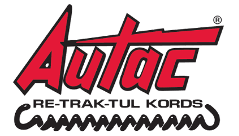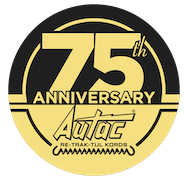Coiled extension leads, also known as retractable or spiral extension cords, have become indispensable tools in our modern lives. They offer flexibility and convenience when it comes to powering various electrical devices, whether at home, in the office, or on the go. However, selecting the right coiled extension lead for your needs is crucial to ensure both safety and efficiency. In this guide, we’ll walk you through the key factors to consider when making your choice.
Here Are The Right Coiled Extension Lead
1. Length Matters
One of the first things to determine is the required length of your coiled extension lead. Measure the distance between your power source and the device you intend to connect. Opt for a lead that provides adequate reach without excessive slack. Remember, excessive coiling or stretching can lead to overheating and potential hazards.
2. Gauge and Amperage Rating
Pay attention to the wire gauge and amperage rating of the coiled extension lead. The wire gauge indicates the thickness of the cord, with lower gauge numbers representing thicker wires. Thicker wires can carry more current and are safer for higher-powered devices. Check the amperage rating to ensure it matches the power requirements of your appliances.
3. Safety Features
Look for safety features such as surge protection and overcurrent protection. These features can safeguard your devices from voltage spikes and prevent overloading, reducing the risk of electrical fires or damage to your equipment.
4. Plug and Socket Types
Check that the coiled extension lead has the appropriate plug and socket types for your devices. Some leads offer universal compatibility, while others are designed for specific applications, like outdoor use or specialized equipment.
5. Material and Build Quality
Consider the build quality and materials used in the lead’s construction. High-quality, durable materials can withstand daily wear and tear, ensuring a longer lifespan for your extension lead. Look for leads with reinforced connectors and strain relief to prevent fraying or damage.
6. Indoor or Outdoor Use
Determine whether you’ll be using the coiled extension lead indoors or outdoors. Outdoor leads should be weather-resistant and designed to withstand exposure to moisture and sunlight. Indoor leads may not have the same level of protection.
7. Cord Management
Some coiled extension leads come with built-in cord management features, such as cord locks or winding mechanisms. These can help keep the lead organized and prevent tangles when not in use.
8. Brand Reputation and Reviews
Research the reputation of the brand and read user reviews. Reliable manufacturers often provide high-quality products, and user feedback can offer valuable insights into the performance and durability of a specific extension lead.
9. Compliance with Safety Standards
Ensure that the coiled extension lead complies with safety standards and certifications in your region. Look for labels or markings that indicate compliance with relevant electrical safety regulations.
10. Maintenance and Inspection
Once you’ve selected the right coiled extension lead, remember to perform regular inspections for wear and tear. Check for damaged insulation, exposed wires, or signs of overheating. Replace any damaged leads promptly to maintain safety.
Preventing Coiled Extension Lead Fires: Your Guide to Safety
Coiled extension leads are invaluable tools that provide flexibility and convenience when it comes to powering our electronic devices. However, like any electrical equipment, they can pose a fire risk if not used correctly. Fires caused by coiled extension leads can have devastating consequences, but by following safety measures and conducting regular inspections, you can significantly reduce the risk. In this guide, we’ll offer tips and advice on how to prevent coiled extension lead fires and keep your home or workplace safe.
1. Choose the Right Extension Lead
Selecting the appropriate coiled extension lead for your needs is the first step in preventing fires. Consider factors like the lead’s length, wire gauge, and amperage rating. Ensure that it’s suitable for the devices you plan to connect. Using an extension lead with a higher amperage rating than needed can lead to overheating and potential fire hazards.
2. Avoid Overloading
Overloading an extension lead by connecting too many devices to it can cause overheating and increase the risk of fire. Pay attention to the amperage rating of the lead and the power requirements of your devices. If in doubt, use multiple extension leads or consider using a power strip with surge protection.
3. Inspect Regularly
Regular inspections are crucial for fire prevention. Examine your coiled extension lead for signs of wear and tear, including:
- Damaged Insulation: Look for any cracks, cuts, or exposed wires in the lead’s insulation. Exposed wires can create sparks, leading to a fire hazard.
- Burn Marks: Burn marks on the plug, socket, or lead itself are indicative of overheating and should be taken seriously.
- Frayed Cords: If you notice fraying or damage to the cord, it’s essential to replace the lead immediately.
4. Don’t Exceed the Maximum Length
Coiled extension leads should not be stretched to their maximum length, as this can cause overheating. Keep the lead coiled to a reasonable length for your needs.
5. Uncoil Completely When in Use
When using a coiled extension lead, make sure to uncoil it fully. Coiled leads generate more heat than fully extended ones, increasing the risk of overheating.
6. Avoid Running Leads Under Carpets or Rugs
Running extension leads under carpets or rugs can trap heat and prevent proper ventilation, which may lead to overheating. If you need to run a lead across a walkway, use cable protectors designed for the purpose.
7. Keep Leads Away from Water
Water and electricity don’t mix. Ensure that your coiled extension lead is kept away from water sources and is not used outdoors unless it’s explicitly designed for outdoor use and is rated as waterproof.
8. Turn Off When Not in Use
Whenever possible, turn off devices connected to extension leads when they are not in use. This reduces the risk of overheating due to continuous current flow.
9. Use Surge Protectors
Consider using surge protectors with your extension leads. Surge protectors can help prevent voltage spikes that may lead to fires or damage to your devices.
10. Educate and Train
If you are using coiled extension leads in a workplace or shared environment, educate others about fire safety and the proper use of extension leads. Encourage a culture of safety and responsibility.
Preventing coiled extension lead fires is about making informed choices, conducting regular inspections, and using these tools responsibly. By following these safety measures and being vigilant, you can enjoy the convenience of coiled extension leads without compromising safety. Your proactive efforts can help protect lives and property from the devastating consequences of electrical fires.
Conclusion!!
Choosing the right coiled extension lead involves considering factors like length, wire gauge, safety features, plug types, material quality, and intended use. By taking these factors into account, you can select an extension lead that not only meets your needs but also ensures safety and efficiency in all your electrical applications.




Recent Comments